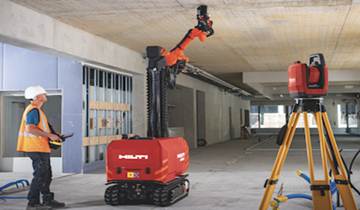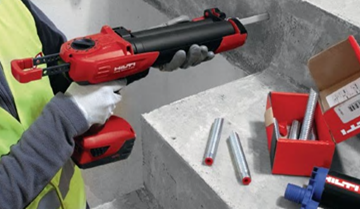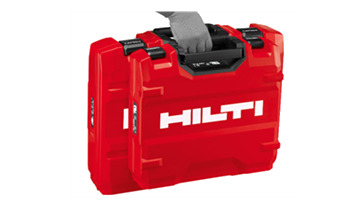TOOLBOX TALKS – 5 WAYS TO REDUCE SITE ACCIDENTS
Let’s all make construction sites safer
Every year in Europe, workers on construction sites
suffer from injuries, poor health and fatal accidents as a result of working
within this industry - with the sector as a whole being responsible for 20% of
all fatal accidents at work across Europe. According to HSE, in the UK alone,
an estimated 555,000 workers sustained non-fatal injuries, according to self
reports across the period of 2017 to 2018.
The statistics are damning and while it’s impossible
to stop site accidents altogether, it is possible to reduce the risk of them
happening, which in turn can improve overall productivity on site. You can do
this by understanding what the root causes of common health and safety issues
are and putting practical and effective measures in place to properly manage
risks and keep your employees safe.
1. Use tools with the latest safety technology
and keep this equipment well maintained
Keeping tools maintained
and using the latest safety technology is one of the easiest ways to reduce the
amount of accidents on a construction site. Selecting safe tools (that are
appropriate for the job at hand) and maintaining them well not only means there
is less chance of injury, but it is more efficient as consistently safe tools
directly improves productivity, as workers have less worry over using faulty or
dangerous equipment.
A common injury across the sector is Hand-Arm
Vibration Syndrome (HAVS), which occurs when employees are exposed to high
levels of vibration, usually from using powerful hand tools over a prolonged
period of time. It may seem logical to assume that the best tool to avoid HAV
would have the lowest vibration value, however, this is not the case.
When tool performance is factored in, workers can
often experience less vibration using a tool with a higher vibration value due
to much faster completion of the task at hand - meaning that the safest tool
isn’t always the most obvious one. This is just one example of how carefully
selecting safe tools can not only reduce the risk of accident, but improve
productivity.
However, curating a selection of safe tools isn’t
enough - they must be maintained to an excellent standard. This can be done by
putting a digitised asset management system in place that keeps track of tools
so that certifications are up to date and both the tool and the person using it
can be tracked in case an accident occurs.
If a tool does break, it's a good idea to ensure that
safe spares are made available and the broken tool fixed quickly with effective
fleet management.
By doing this, you will not only raise employee
satisfaction through workers that feel safe and valued, but reduce the risk of
accidents significantly.
2.
Keep construction sites clean and tidy
According to HSE figures, slips, trips and falls
accounted for 31% of non-fatal injuries on site in 2017/18. While slips and
trips are sometimes an inevitability even on the cleanest of sites, they can be
somewhat prevented and reduced by putting safety procedures in place to keep
all loose cables, cords and debris out of the working area. Although this may
seem time-consuming, ultimately it saves a worker from getting injured.
A common but also underestimated problem that comes
with working in the construction industry is dust inhalation caused by
intrusive jobs like drilling, breaking, slitting, sanding, sawing, or grinding
in which the dust inhaled can cause respiratory illnesses or in worst cases be
carcinogenic.
Whilst you can’t force workers to wear masks, you can
safely remove most of the harmful dust and debris using a vacuum and on-tool
dust extraction systems. This will not only save time spent sweeping and ensure
the area is clean and tidy for the following day, it will remove the potential
of dust inhalation. As the inhalation of dust can lead to respiratory illness
for employees (which often occurs years after the initial exposure), it is
essential to ensure that the correct safety measures are in place to protect
workers throughout their life, not just their time on site.
3.
Provide health and safety training/safety briefing to workers
Preventing injuries on-site requires more than just
good housekeeping, it requires employees to be constantly aware of the dangers
around them, and how to avoid injuring themselves. As an employer, you must go
above and beyond obligation (basic regulations and requirements) to provide
workers with the health and safety knowledge they need to feel comfortable and
valued on-site.
One thing that workers should be expertly trained in
is planned emergency procedures and the general precautions they must be aware
of while on site. A good way to do this is with the STOP! Principle, which can
be used to provide practical strategies to reduce the impact of health and
safety challenges such as dust, vibration and kickback that could lead to
injury. This is a simple and effective way to implement proper health and
safety training that employees will be able to remember and use if a situation
arises.
Problems arise when safety isn’t regularly
communicated to workers - don’t make this mistake and educate your workers.
4. Working at height and
ensuring workers have certifications
The Work at Height Regulations 2005 was created to
prevent serious injury and death caused by a fall from height. Of course, where
possible, avoid working at height completely. However, on a construction site
working at height is often needed and luckily there are ways to make
potentially one of the most dangerous tasks safer for the individual.
To work at height, employers must adhere to a number
of regulations. One of these, LOLER
(Lifting Operations and Lifting Equipment Regulations) 1998, ensures
that employers provide lifting equipment that is fit for purpose, appropriate
for the task, suitably marked and, where appropriate, subject to statutory
thorough examination. It also states that lifting operations must be properly
planned and supervised.
This can become tricky when a proper system isn’t in
place to ensure these regulations are being followed, and that all
certifications are up to date. It would be highly beneficial to use management
software for this, to ensure that the information about the lifting equipment
is easily accessible and therefore easier to update if needed. As accidents at
height are often very serious or fatal, this is one of the most important ways
to prevent incidents from happening.
5. Reduce the use of corded
tools
As previously discussed above, slips and trips are
extremely common on site - yet are one of the most preventable accidents. This
is due to a rise in high-quality cordless tools, which not only reduces the
time spent cable pulling, but also directly reduces the risk of slips and
trips.
Using cordless tools is a very easy way to reduce the
risk of accidents on site, because if the majority of your tools are cordless,
the less chance there is for an employee to trip themselves or someone else.
Not only this, they increase productivity and mobility - employees are less
likely to injure themselves trying to perform a task that is made more
difficult with cords.
For compliance managers, it is essential to ensure the
workspace you provide for your employees is compliant and safe. It is essential
to put proper safety measures in place as a precaution, rather than a reaction
after an incident. By putting these five steps in place, you will be able to
better anticipate potential dangers for employees, and better plan to prevent
their injury.
Having the right tools, plans and systems in place is
just the vital first step into risk prevention. To build on this knowledge and
learn more about how best to optimise your health and safety strategy, download
the 2019 Construction Site Safety Guide. In this guide, you will find in-depth
descriptions about must know regulations, how to successfully implement Health
and Safety measures on site and ultimately how to ensure your construction
business is fully compliant.
more
hilti news


